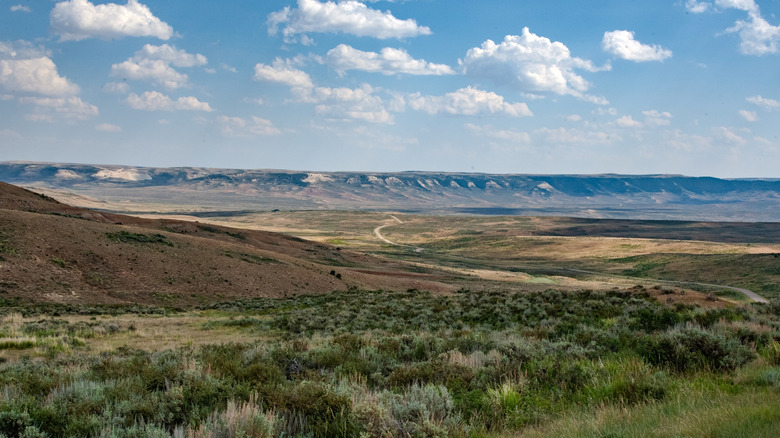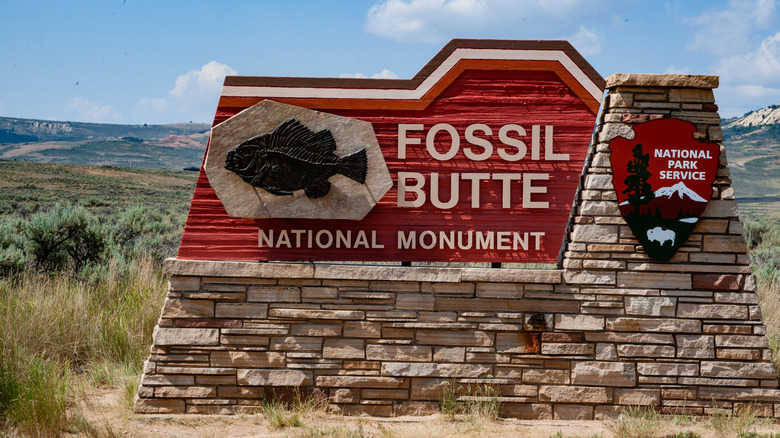'America's Aquarium In Stone' Brims With Fascinating Fossils In A Once-Vast, Glistening Lake In Wyoming
Things are rough out there, so it's likely you want to unplug from everything going on in the modern world for a bit on vacation. One place you can do that involves a journey far into the past. In southwest Wyoming, you'll find an astonishingly beautiful place to explore not only the landscape, but an area that was once a vast, glistening lake. Fossil Butte National Monument has been called an "American aquarium in stone" by the National Park Service because this former lake houses an absolute treasure trove of fossils, particularly of fish, though you'll also find plants and insects, and sometimes even a mammal.
Around 52 million years ago, this lake became the perfect place to preserve these creatures and plants. Though it was a freshwater lake, there was a layer of saltwater on the bottom, which meant anything that died and drifted down there wasn't scavenged by other creatures who couldn't tolerate the salt content. In addition, cyanobacteria, which need light for photosynthesis, lived at the bottom and would grow over anything that landed there to get to the sun. Add in limestone sediment on the bottom from storms, and millenia later, you've got fossils.
If you want to see these fossils, you can visit the Fossil Butte National Monument visitor center museum and check out some of the 300 fossils on display. This area represents one of the world's largest deposits of freshwater fish fossils, though it's also given us animals like alligators, bats, turtles, and even small horses. You can enjoy ranger-led programs in the summer, and join the Fossil Butte Quarry Program when you visit to help collect them. You can't keep the fossils, but there are other places that let you.
How to dig for fossils at Fossil Butte National Monument
Fossil Butte National Monument is around 15 minutes from the town of Kemmerer, where you can stay and dine, as you can't camp in the park. It's also around 2.5 hours from the easy-to-navigate Salt Lake City International Airport, and around 4.5 hours from Yellowstone if you're there for a visit. The park is open from sunrise to sunset all year, though the visitor center's hours change seasonally. There are great hiking trails here, too, like the Historic Quarry Trail, which is a challenging 2.5-mile loop, with signs that explain the geology of the area. However, this is a high elevation hike, so be sure you know what to do if you experience altitude sickness. You also must bring water and sunscreen (such as Samantha Brown's Supergoop! sunscreen dupe), since there isn't any shade on the trail.
Although you won't see fossils on the hikes, you can dig some up yourself through Fossil Lake Safari, where you can actually keep almost all of the fossils you find. Fossil Lake Safari is around 22 minutes from Kemmerer, and is a great place to take the kids. It's open all week from May 16 through September 30, and you don't have to make a reservation. As of this publication, a full day is $159 for adults, though you can do four and two-hour explorations as well. You can keep anything worth less $100,000, since they have to pay a royalty to the land owner. You may find a 52-million-year-old fossil of an ancestor of animals you see in aquariums today, and get to display it in your home.

